My Ghanaian Identity
Food – Fufu and Jollof
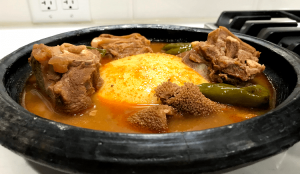

One can tell a lot about a country’s culture by its food and to be honest , Ghanaians love their food! Ghanaians love to prepare dishes that include starchy components such as fufu (picture on the left) which usually goes with soup and protein. Some popular dishes include jollof (picture on the right) waakye, boiled yam, tuo zaafi and banku. Most dishes are eaten by hand and fufu in particular is scooped up in pieces with the right hand and then dipped in soup before consumption.
Greeting

Greetings are very important and necessary when living in a Ghanaian society. When talking to an older person, you must not gesture with your left hand. In the Ghanaian society almost every gesture done with the left hand when conversing with someone is considered as disrespectful and rude. For example, you cannot hand over items to another person with your left hand, it has to be with your right. I sometimes subconsciously apologize by saying, “sorry for the left” any time I use my left hand when talking or passing an item to someone.
Tribes
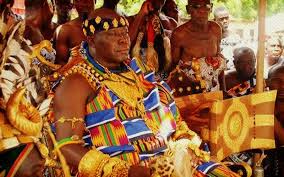
There are a lot of tribes in Ghana but the six larger groups are the Akans, Ewes, Ga-Adangbe, Mole Dagbanis, Guans, and Ga. I am from the Akan tribe and it is the largest tribe in Ghana comprising about 47% of the population. It is also one of the few matrilineal societies in the whole of west Africa. Akans are made up of Ahantis and Fantes who are mostly located in the Ashanti and Cape Coast regions of Ghana. The official language of the Akan tribe is Twi and I am proud to say I am fluent in it.
Religion


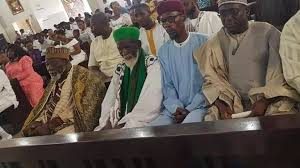
There are three main religions in Ghana, namely the Christian, Muslim and African Traditional Religion. Religion is a very big part of Ghana and according to a 2018 analysis by The Guardian, Ghana and Georgia were the only two countries where people under 40 were more religious than their older compatriots. Christianity is the largest religion in Ghana with 70% of the population followed by Islam which makes up about 25%. I am a Christian and so is my family.
Music
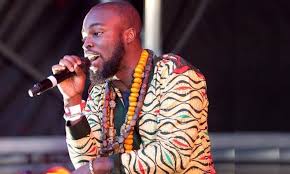
Ghanaians love their music and are most likely to dance to every song they hear on the streets. Before Afrobeat became popular, highlife dominated the scene even up until this day. Most Ghanaian music can be easily danced to, because they sometimes rhyme with jazz and rock music. The new generation; however, has transformed this style into their own taste: hiplife. This is like a younger, hipper version of classical highlife.
Festivals
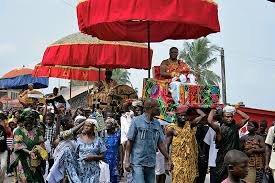
Festivals are one important aspect in the Ghanaian society and culture. They are celebrated for various reasons by the various tribes in the country. I lived in the Greater Accra region: the capital of Ghana, which is predominantly occupied by the Ga tribe hence why I am fluent in the Ga language. The Ga people, which are predominantly fishermen, celebrate Homowo to appease the sea goddess and in return for a successful fishing year. A few days before the festival, a ban is placed on loud music throughout the town. It might be strange to be in a bar without loud music but the Ga people take this practice very seriously.
Fashion
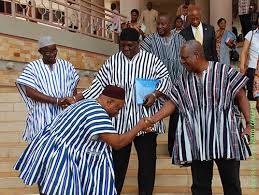
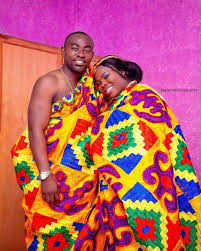
Modern Ghanaians wear a mix of traditional and western fashion. But it is safe to say that African fabrics dominate in the Ghanaian society. From its patterns to its designs, Ghanaian fabrics are entrenched in our culture. Kente cloth (the picture on the right above), which became very popular in the 1960s and 70s during the civil rights movement in America, is originally from Ghana. It is known to be woven by the Akan tribe and is typically worn during ceremonies such as weddings and naming ceremonies. The batakari (the picture on the left above) is also popular in Ghana, and it originates from the northern regions of Ghana. I own a couple of kente clothing which I wear to church and other ceremonies.
Language

There are more than 90 languages spoken in Ghana of which the most common ones are Twi, Ga, Ewe and English. English is the official language of Ghana with more than 80% of the people speaking it fluently. Personally, I speak Twi, Ga, and Pidgin English in addition to English which is really common in Ghana.
The golden stool
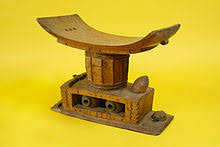
The golden stool is the ultimate symbol of power and strength in the Ashanti Kingdom, of which I am a part of. This stool is believed to possess the soul of the Ashanti people. The stool was commanded by the then Chief Priest: Okomfo Anokye after which it descended from heaven in a cloud of white dust and landed on the lap of the first king of the Ashanti Kingdom. It was then proclaimed to be the strength and unity of the Ashanti people thus its safety is taken seriously.
The Yaa Asantewaa War
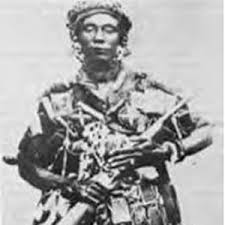
The Yaa Asantewaa War also known as The War of The Golden Stool was fought in the early 1900s between British troops and the Ashanti people. Yaa Asantewaa was the queen mother of Ejisu in the Ashanti empire who stood up to the British army when no one did. The war began when British representative Sr. Frederick Hodgson sat on the Golden Stool. This was seen as the highest level of disrespect in the Ashanti Kingdom but all other male rulers were debating on how best to respond to such an act due to fear of the British Army. As soon as this news became known to Yaa Asantewaa, she held her ground and led her troops as the Commander in Chief of the Ashanti Army which inspired other Ashanti rulers to join the war. She is seen as a symbol of bravery and courage throughout Ghana.
Independence
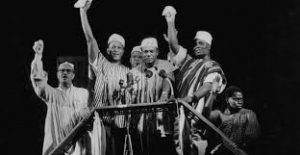
The picture above shows the first president of Ghana, Kwame Nkrumah (in the middle), delivering the speech of freedom. On this night he delivered the famous phrase, “the African People are capable of managing their own affairs and Ghana our beloved country is free forever.” Ghanaian independence from the British colonial rule occurred on the 6th of march in 1957 and we were the first sub-Saharan African country to gain independence. Independence day is dear to the heart of Ghanaians and every 6th of March we gather at the independence square in Accra to parade and celebrate it. People from all over the country travel to Accra to experience such celebrations and it is also televised throughout the country.
The Cape Coast Castle

The tourism industry in Ghana is known to promote cultural and heritage tourism and the Cape Coast Castle is not an exception to this. The Cape Coast Castle was built in Cape Coast, Ghana as a trading post for timber and gold by the Portuguese in 1555. It was later used in the Trans-Atlantic slave trade to hold slaves before they were loaded onto ships and sold in the Americas and Caribbean. It is popularly known to have “the gate of no return” which represents the last stop before crossing the Atlantic ocean. This castle serves as a reminder to Ghanaians of their past and history with British Colonizers.
Egyptian Identity
Imhotep

Imhotep was a chief minister to the King of Egypt :Djoser in 2630 BCE. He was a physician, astronomer, priest, and politician; however, his most famous contribution to Ancient Egypt was in the field of Architecture. When one thinks of Ancient Egypt, it is likely that the first three things one may say will include pyramids. As an architect, Imhotep is credited with designing and building the famous step pyramid of Djoser at Saqqara which inspired the building of all other pyramids. Imhotep is respected throughout Egypt today, and he serves as a symbol of civilization and creativity to the Egyptian people.
Religion

Religion has always been important to Egyptians throughout history. It played a major role in the lives of Ancient Egyptians because life on earth was seen as one part of an eternal journey. The depth of thinking and imagination displayed in creation of ideas and images of gods and goddesses in Ancient Egypt is unmatched. Throughout history, religion in Egypt has evolved to become the driving force of cultural expression. Today, the majority religion in Egypt is Islam, with the Sunnis being the largest. About 8% to 10% of the Egyptian population are Christians with the Coptic Orthodox Church being the largest Christian denominations.
Tutankhamun
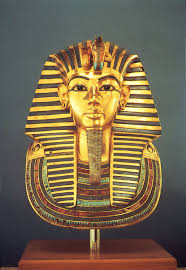
Tutankhamun is arguably the most famous and respected Egyptian Pharaoh in the modern world. He ruled Ancient Egypt in 1336 BCE. Tutankhamun is known for returning order to a land left in chaos by his predecessor’s political-religious reforms. His fame today was as a result of his almost-intact tomb discovered in the Valley of the Kings by an archaeologist. Today, his golden sarcophagus now stands as a symbol almost synonymous with Egypt.
Pyramid of Giza
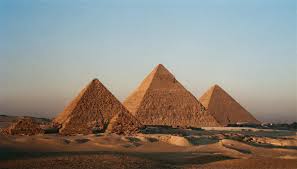
The Great Pyramid of Giza and the two other smaller pyramids in the picture above serve as the burial tombs of Egyptian Pharaohs namely Khufu, Khafre and Menkaure. Khufu began constructing the pyramid in 2550 BCE and it is believed to be made of about 2.3 million stones. The second pyramid was built by Khufu’s son Khafre and it is marked by a unique feature called a sphinx. The sphinx is a monumental sculpture with its back half resembling a lion and the front half, the pharaoh’s head. Egyptians employed extraordinary construction techniques to build these pyramids and the work speaks for itself. One may argue that these pyramids were built by slaves but it is clear that all the workers were highly skilled and dedicated to the cause of their pharaoh. Considering the time and resources available at the time, it should be almost impossible to build such monuments thus the Egyptians hold these pyramids in high esteem.
The Nile

The Nile river is arguably the most important resource of ancient Egypt and it is still considered as one of the most valuable resources today. The Nile river is more than just a river to Egyptians; it symbolizes fertility. The Nile provided a fertile land to Ancient Egyptians after its annual flooding. The flood deposited rich silt on the banks of the river which allowed Egyptians to grow their crops. Today, the majority of Egyptian population live within a few kilometers of the Nile. Canals transport water from the Nile to irrigate farms and support cities.
The Mouseion

The Mouseion or Musaeum in Alexandria, Egypt was an institution founded by Ptolemy I or Ptolemy II in the 3rd century BCE. It included the famous Library of Alexandria : an institution of world renown. It was a research center especially noted for its scientific and literary scholarship. However, the buildings of the museum were destroyed during the civil war under the Roman Emperor Aurelian. It is from the Musaeum that the word “Museum” was derived from. Even though the Mouseion is long gone, it serves as a symbol for Egyptians love for science and literature.
Alexander the Great
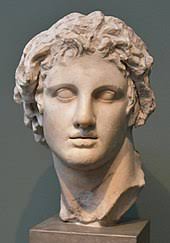
Alexander the Great in 332 BCE, conquered Egypt by defeating the Persians. Till date, he is respected and loved by Egyptians because as a leader, he respected the culture, religion, and the Egyptian people themselves. He was charmed by Egyptian culture to the extent that he began to wear their traditional clothes and study many of their scriptures. During his rule, he named the city Alexandra after himself which is one of the major cities in Egypt today.
The Crusades
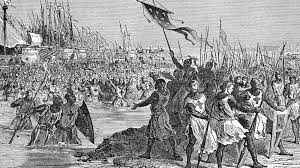
The Crusades were a series of religious wars between Muslims and Christians started primarily to secure control of holy sites considered sacred by both groups. The Crusader invasion of Egypt occurred in about 1154 CE specifically to enable the kingdom of Jerusalem strengthen its position in the Levant by taking advantage of the weakness of Fatimid Egypt. However, in 1169 Ayyubid Saladin became the visor of Egypt. He was considered the most charismatic of the Sultans and was even admired by some of his enemies. During the First Crusade, the Christians took Jerusalem from the Muslims and it was under the leadership of Saladin the Muslim took it back. The Crusades ended in about 1291; however, its wounds are still being endured today between Egyptian Muslims and European Christians.
Mamluks
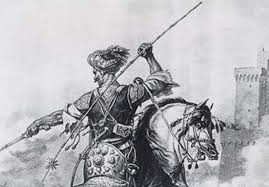
The Mamluks ruled Egypt from 1250 to 1517. They were slave soldiers, members of one of the armies of slaves established during the Abbasid era. Mamluk generals, under the Ayyubid sultanate, used their power to establish a dynasty that took political control over several Muslim states. The Mamluks are remembered in Egypt for their culture and learning; they were great patrons of the arts. They are known for making exceptional buildings such as the mosque madrasa and the Stone tracery on the dome of the Mausoleum of Sultan Barsbay
The Mosque Madrassa

The Mosque Madrassa, commissioned by Sultan Hassan , was built between 1356 and 1363 in Cairo, Egypt. The Mosque was considered astonishing for its huge size and remarkable architectural components. The Mosque is known to have an enormous central courtyard: a vast square space surrounded by four monumental chambers. These four chambers are said to have each been used for teaching one of the four schools of Islam. It is still considered one of the most impressive historic monuments by Egyptians today.
Napoleon’s invasion of Egypt
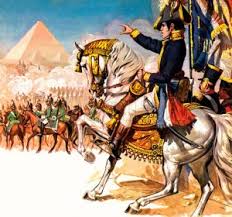
Napoleon’s invasion of Egypt is arguably one of the most impactful events on Egyptian Independence. The French invasion, led by Napoleon Bonaparte, of Egypt occurred in 1798. The campaign was proclaimed to defend French trade interests and seek further direct alliances with India to weaken Britain’s access to India. The invasion lasted for only four years; however, it demonstrated military, technological and organizational abilities of the Western European powers to Egypt. This invasion also introduced inventions such as the printing press and ideas such as Liberalism, nationalism and equality before the law which eventually led to Egyptian independence from the Ottoman rule.
The Suez Canal
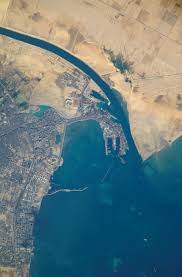
The Suez Canal is arguably the most important resource to Egyptians after the Nile. The 145 year old waterway is known as the fastest shipping route between Europe and Asia. It is reported to bring about $3 billion a year in revenue to Egypt. Egyptians view the Suez canal as their gift to the world and continues to remain a symbol of national pride beyond its economic capabilities. It is a symbol of what Egyptians are capable of.